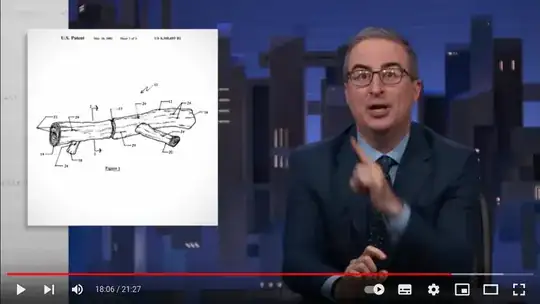To add to the two other good answers, the patent wasn't just for "a stick", it was for a stick shaped dog chew toy that acted like a real stick. This reads as a patent for a commercial product that acts and looks like a stick, not a stick you'd pick up off the ground under a tree.
If you read through the patent, the claims talk about multiple materials (like plastic and rubber), for it to float, to be easy to carry and pick up, for it to have various coloring (fluorescent or camouflage), have scents added to it, and more. The patent also specifically states it's classification as "Chewable toys, e.g. for dental care of pets". This category has over 5000 patent listings.
Also, the USPTO generally doesn't care what people are patenting, as long as it can be described under their rules for patent applications. They don't exist to say what products are good, able to make a profit, or anything like that.
If you look at what Last Week Tonight is, it's satire, so definitely take what they say with a massive grain of salt.
Edit:
There seems to be a lot of opinions about this situation and while some are relevant, some are not, and even the relevant ones aren't necessarily correct. Let me explain.
The question is about whether the USPTO patented a stick. It didn't, it patented something that resembles a stick. Arguing that a stick could invalidate the patent ignores that many patented things resemble things in nature, but as they are man-made as a product, they are subject to being patentable. The patent isn't issued for the product, but rather for the idea or the process of making the product.
The fact that the patent was later revoked/invalidated has no relevance on whether they originally granted the patent. There are literally millions of patents and billions or trillions of examples of "prior art" that a patent clerk has to go through the determine if an item is patentable. In 1999, when this was patent was granted, they didn't have the internet as we know it today. (It existed, but it wasn't as comprehensive and easy to use as it is now. It was still mostly relegated to the military, big business, and computer nerds.) They couldn't just "Google it" and find something else similar. Even within the USPTO offices, they didn't have digital search capabilities at this time. They didn't have that until 2001. It's pretty easy to see how other, similar patents could have been left undiscovered. The 1980's and 90's were a time where pet toys were being reinvented (pardon the pun), and so there were a lot of things going on.
Also, the patent doesn't say why it was revoked/invalidated, so we don't know why it was. A patent can be partially invalidated, so a single claim being invalid doesn't mean the whole patent is invalid. Also, infringement is different from the patent being invalid.
Then there's the "point" about it looking like something else, specifically a stick. There are 2 type of patents, a utility patent and a design patent.
A utility patent is about the process to make the item and looks are only a part of it, and it looking vaguely like something else doesn't automatically invalidate the patent. If it did, the vast majority of patents would never have been issued. Anything from toys that looks like non-toys (from guns to cars to people to appliances to electronic items and more), guns and their accessories wouldn't pass because of previous guns and accessories they are similar to, industrial automation that uses similar parts, desks and chairs, and so many other things couldn't be patentable if we relied solely on looks for a utility patent.
A design patent, on the other hand, is where the looks do matter. You have to have a sufficiently distinct looking design for something to be covered under one of these patents. Changing color, a minor change in bevel angle, materials, and a whole list of other things aren't enough to patent something. Trying to patent the look of a stick surely wouldn't happen, which is why the patent in contention isn't a design patent and includes the process on how to make it.
And the choice of material alone isn't enough to invalidate a patent. "A literal stick that floats would seem to violate claim 1" (from the comments below) is totally incorrect. If that were true, a boat, a 2x4, a crumpled piece of paper, or 1000 other things could invalidate that patent as well as likely thousands of other patents.
"It might be be considered satire or comedy but that doesn't mean they don't take their news seriously" (also from the comments below), this is why I suggested the grain/block of salt. Because they are satire, you need to figure out what they are being satirical about and what they aren't, and most satire can be pretty difficult to determine what's what because it's satire. You also have to understand that they are going to oversimplify something just for the sake of satire. If they truly believed that the USPTO patented a stick, they obviously didn't read or understand the patent.
